Many novice collectors often wonder about the best methods to grade Liberty nickels. While the evaluation process is largely technical, it’s also essential to consider the overall visual appeal of each coin.
In addition to the coin’s condition, it’s crucial to account for any imperfections that may have occurred during the minting process. When grading a circulated Liberty nickel using the 70-point Sheldon grading scale, even the smallest surface damage should be meticulously examined.
Table of Contents
Grading Standards For Liberty Nickel
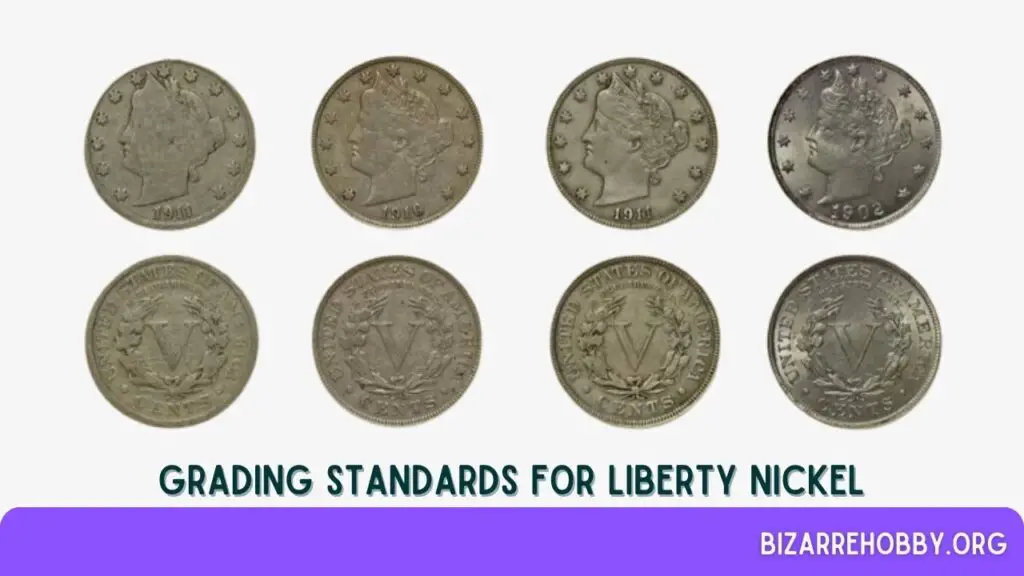
The American Numismatic Association (ANA) primarily bases its grading standards on the Sheldon coin grading scale, introduced by numismatist William Herbert Sheldon in 1949. This scale ranges from 1, representing the lowest basal grade, to 70, indicating a mint state coin.
By 1953, many collectors felt that this grading method was outdated. However, it wasn’t until the 1970s that the ANA modernized the scale, providing detailed descriptions for each grade. This updated scale remains in use today, albeit with several modifications to account for coins that were weakly struck and never circulated.
| Sheldon Scale | Grade |
|---|---|
| 1 | Basal State-1 |
| 2 | Fair |
| 3 | Very Fair |
| 4, 5, 6 | Good |
| 7, 8, 10 | Very Good |
| 12, 15 | Fine |
| 20, 30 | Very Fine |
| 40 | Extremely Fine |
| 50 | About Uncirculated |
| 60 | Mint State |
| 65 | Mint State |
| 70 | Mint State |
Before diving into our grading guide, familiarize yourself with the Sheldon Coin Grading Scale.
Understanding Grades for Liberty Nickels
Liberty Head nickels, commonly known as V-nickels, were produced from 1883 until they were replaced by Buffalo nickels in 1913. The initial design by Charles Barber lacked a denomination on the reverse, featuring only the Roman numeral V. This led to confusion with $5 gold coins, prompting the US Mint to quickly redesign the nickel to include a denomination.
The value of a V-nickel is highly dependent on its details. The first step in grading is to examine the stars on the coin’s outer edge. Only coins with well-defined stars and minimal wear are considered collectible. Additionally, the date and the V number should be clearly visible.
Despite their historical significance, even the highest-graded Liberty nickels often lack appeal due to their poor design, barely visible letters in “LIBERTY,” and weak strikes. Experts estimate that only 1% to 2% of these coins are graded better than GOOD. Most collectors can complete the entire series for under $100, with the exception of a few key dates, such as the highly valuable 1885 nickel.
Details Of Liberty Nickels
| Specification | Detail |
|---|---|
| Face Value | Five cents ($0.05) |
| Compound | Cupronickel |
| Coin Weight | 0.17637 ounces (5 g) |
| Coin Diameter | 0.83504 inches (21.2 mm) |
| Coin Thickness | 0.07677 inches (1.95 mm) |
How to Grade Liberty Nickels?
Since V-nickels are often inexpensive in the lower collectible grades, most numismatists can accurately assess their condition. Professional grading is usually unnecessary and unprofitable. You can grade these coins yourself by following guidelines and watching tutorials on platforms like YouTube.
1. About Good (AG)
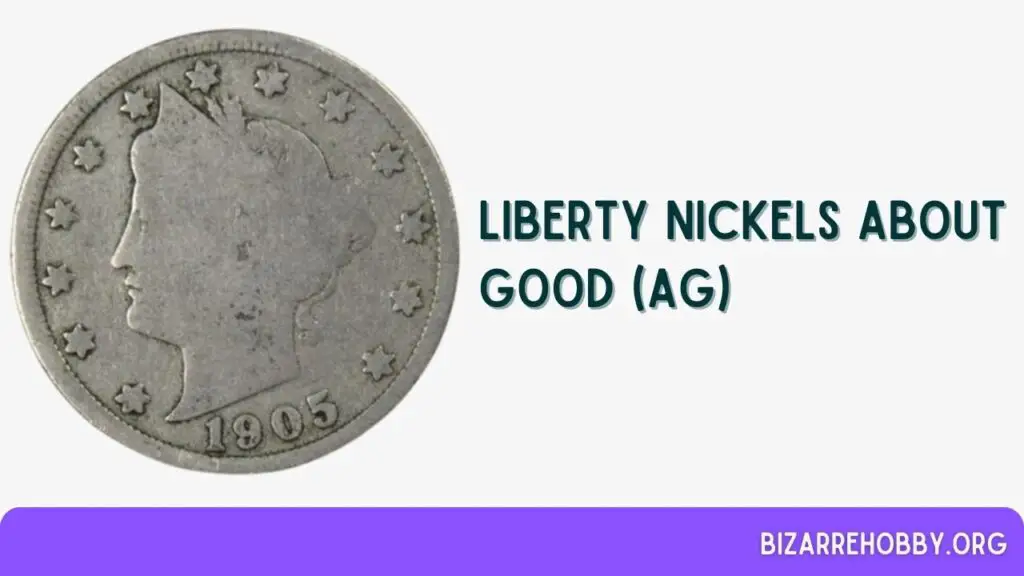
These Liberty nickels are generally non-collectible due to their heavy wear, making the designs barely recognizable.
- Obverse: Liberty’s head is mostly an outline with most details invisible. The minting year is readable but weak and often merges with the coin rim.
- Reverse: The V number is partially worn away, and other design elements are barely visible.
2. Good (G, G4, G6)

Liberty nickels in this condition come in two color variations. Collectors prefer those with a lovely grey color over those with dark charcoal toning. Despite having a full rim, the design is flat.
- Obverse: The design is worn out, with only a few remaining details. The outline of Lady Liberty’s portrait is visible, surrounded by weak but raised stars. The date is readable but faded.
- Reverse: Most details are recognizable despite the faded design. The composition is smooth, with a legend that blends with the rim. The wreath is incompletely outlined and mostly flat.
3. Very Good (VG, VG8, VG10)
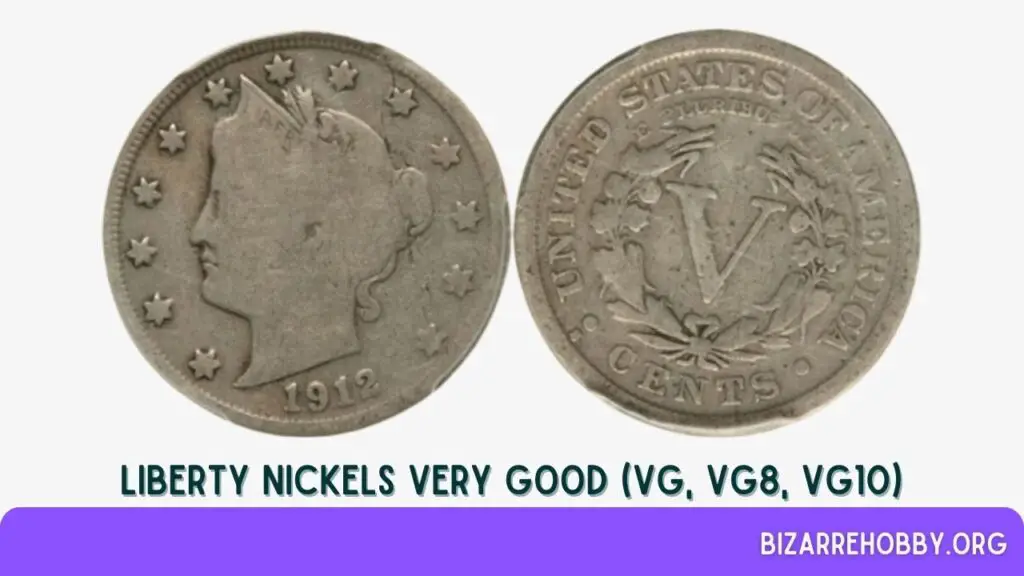
Nickels in this grade must have at least three visible and readable letters in “LIBERTY.” Without them, a coin cannot achieve this ranking.
- Obverse: Besides three visible letters on the headband, the bottom edge of the coronet and most hair details are flat and smooth. The coin rim is complete.
- Reverse: Inside the full rim is a worn-out composition with readable inscriptions. The wreath is boldly outlined, and the letters, particularly in the motto, are weak.
4. Fine (F, F12, F15)
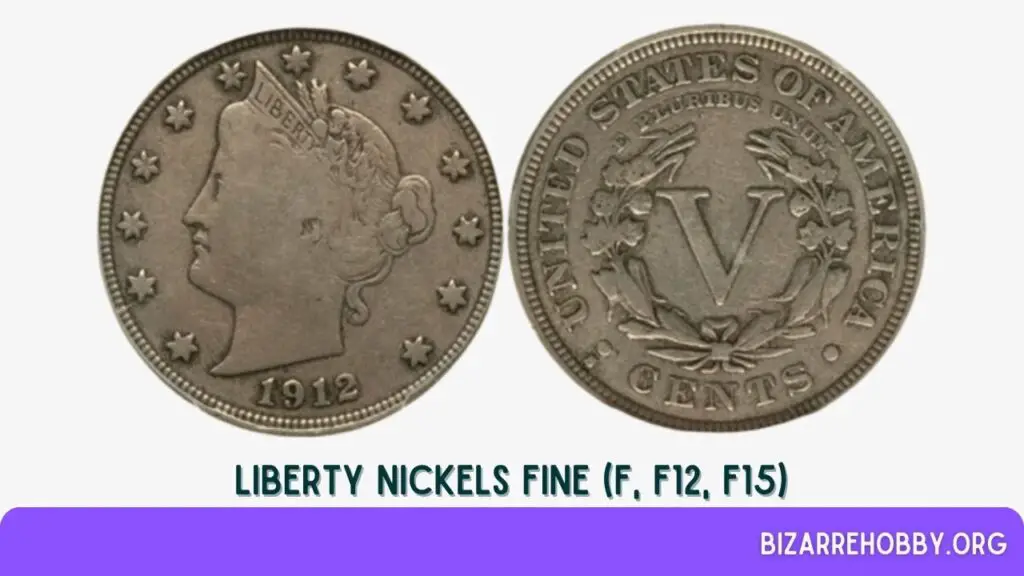
Liberty nickels in this grade show moderate wear but retain distinct details. Despite imperfections, these coins are collectible and sought-after.
- Obverse: Wear and tear have reduced subtle details, creating flat areas. All letters in “LIBERTY” are visible. The headband’s ends and cotton boll details are faded, while Liberty’s hair is mostly smooth.
- Reverse: The lettering is clear despite partial fading. Wreath details are merged, making it challenging to distinguish flat cotton leaves from the stems.
5. Very Fine (VF, VF20, VF25, VF30, VF35)

Liberty Head nickels minted in 1883 are now 140 years old, and the last sets appeared 110 years ago. Specimens in this grade are desirable for collections.
- Obverse: The entire word “LIBERTY” is readable, with bold and recognizable letters. Liberty’s hair shows 50% to 75% of details, and curls are well-defined.
- Reverse: The V number and reverse lettering are readable, and the edge serrations are preserved. The leaves in the wreath are worn but have clear lines on the corn cob.
6. Extra Fine (EF40, EF45)

This grade indicates that the Liberty Head nickel circulated for years, resulting in removed luster and a soft light grey color.
- Obverse: Slight wear is visible on hair and cheek high points. Most of the surface is well-detailed, but slight metal removal affects its toning. The date is sharp, and the coronet has bold lines. Hair strands are separated.
- Reverse: Letters are sharp and defined, depending on their position, but still in high relief. The wreath has separated maple leaves, corn grains, and cotton bolls. The bow details are preserved with a raised central knot.
7. About Uncirculated (AU50, AU55, AU58)

Coins in this grade spent limited time in circulation, preserving most details. Mint luster is visible, with minimal wear on the highest points.
- Obverse: Light wear is visible on Liberty’s hair, mainly on the highest points at the forehead and left of her left ear. About half of the mint luster remains.
- Reverse: Light wear is visible on high points, while the lettering is well-defined. The flattest areas are on the corn cobs in the wreath.
8. Mint State (from MS60 to MS70)
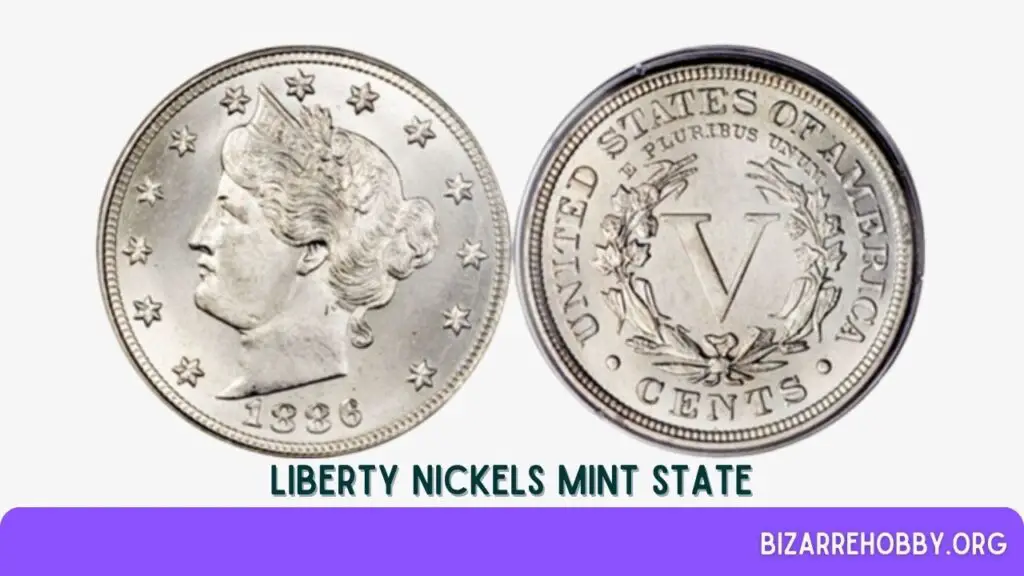
Under a light source, these uncirculated coins exhibit beautiful luster. Cleaning with abrasive agents disqualifies even the best-quality pieces from this grade.
- MS 60: The mint luster may appear washed out, with contact marks on the surface. Liberty nickels containing copper often appear dark, spotted, and dull.
- MS 65: These coins have a quality struck mint mark and date. Surface luster is attractive, with a few tiny contact marks and patches.
- MS 67: The highest-quality Liberty nickels fall into this grade. They have above-average attractiveness and luster, with original color preserved. Imperfections are minimal and barely visible under magnification.
Final Thoughts
The primary purpose of Liberty Nickel grading is to determine their market value. Although evaluation is not an exact science, trained professionals assess each piece based on the tiniest details, providing accurate descriptions and price ranges based on appearance and quality.
